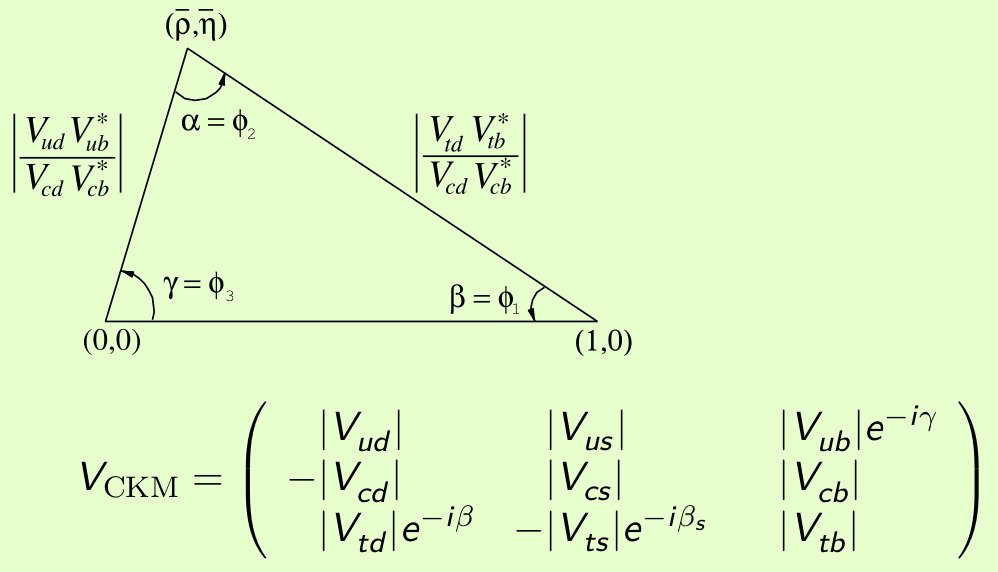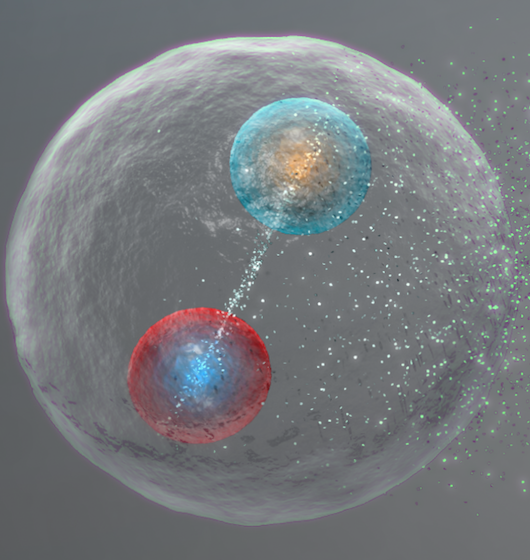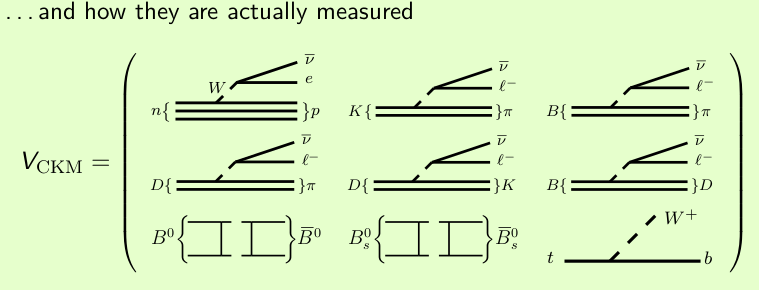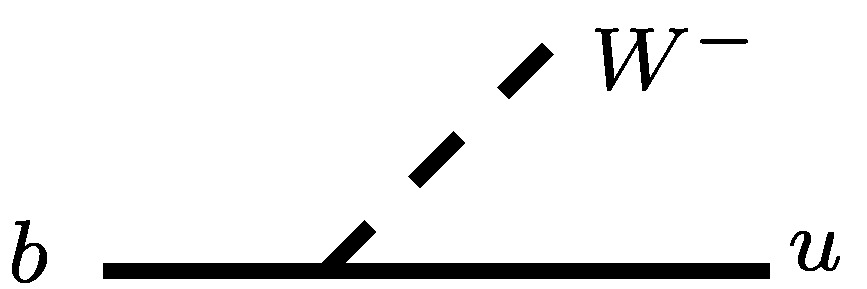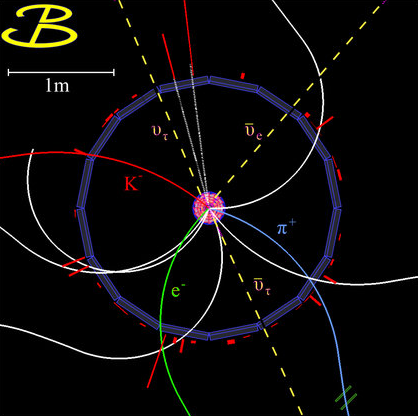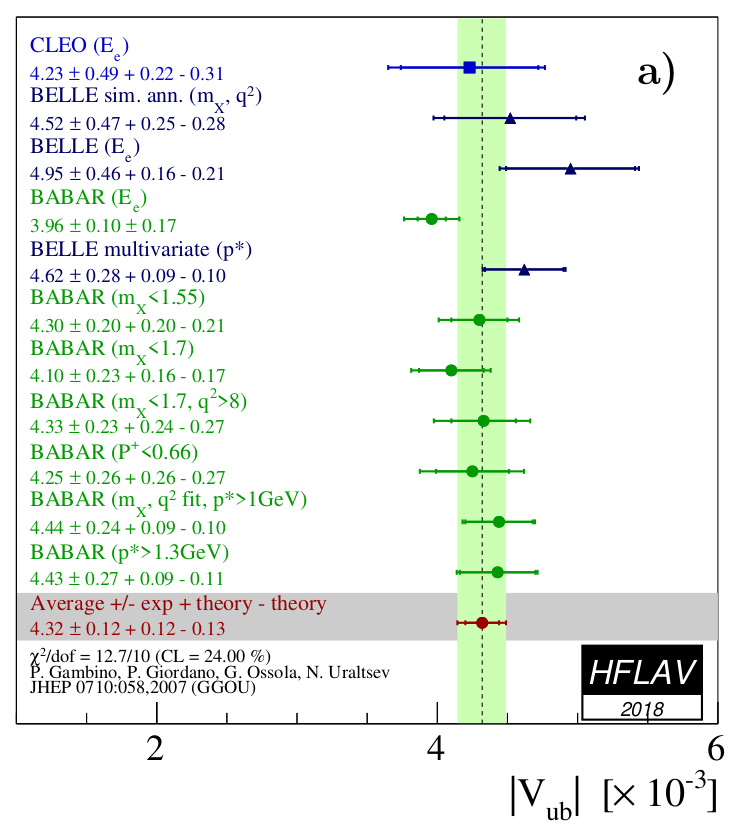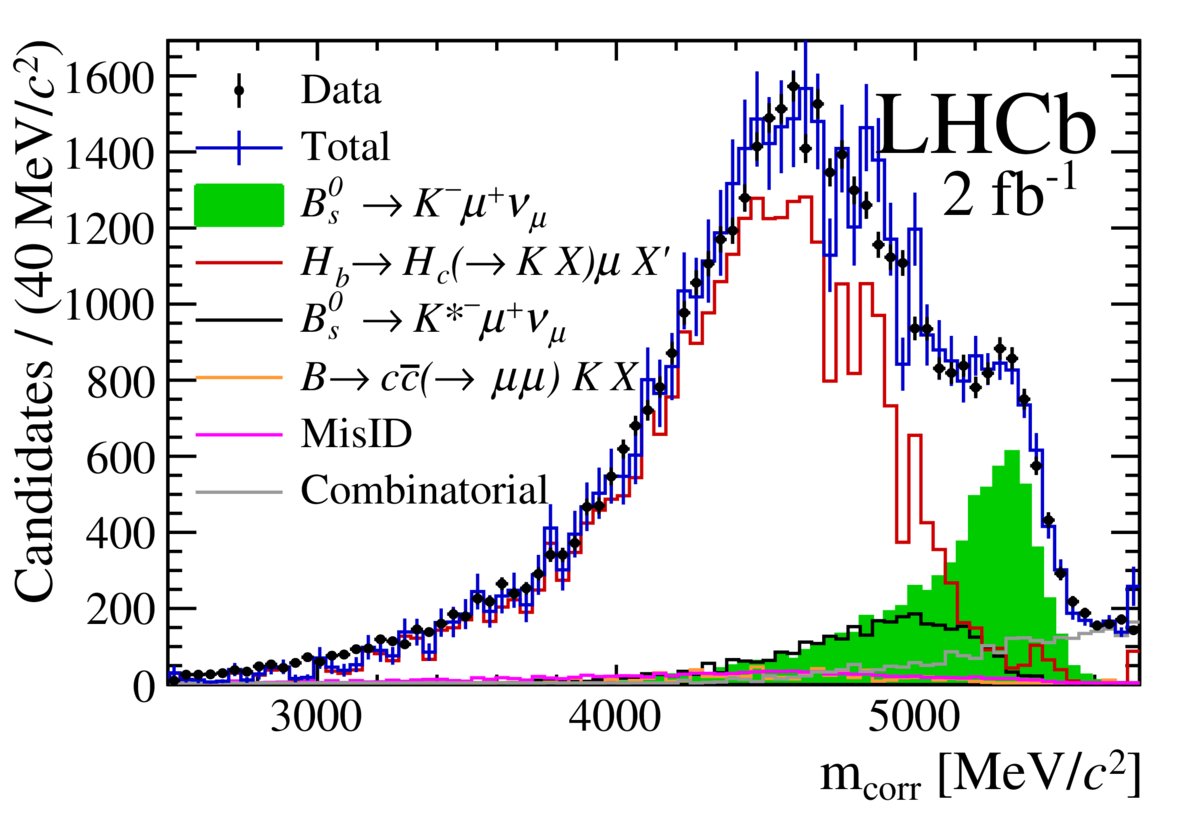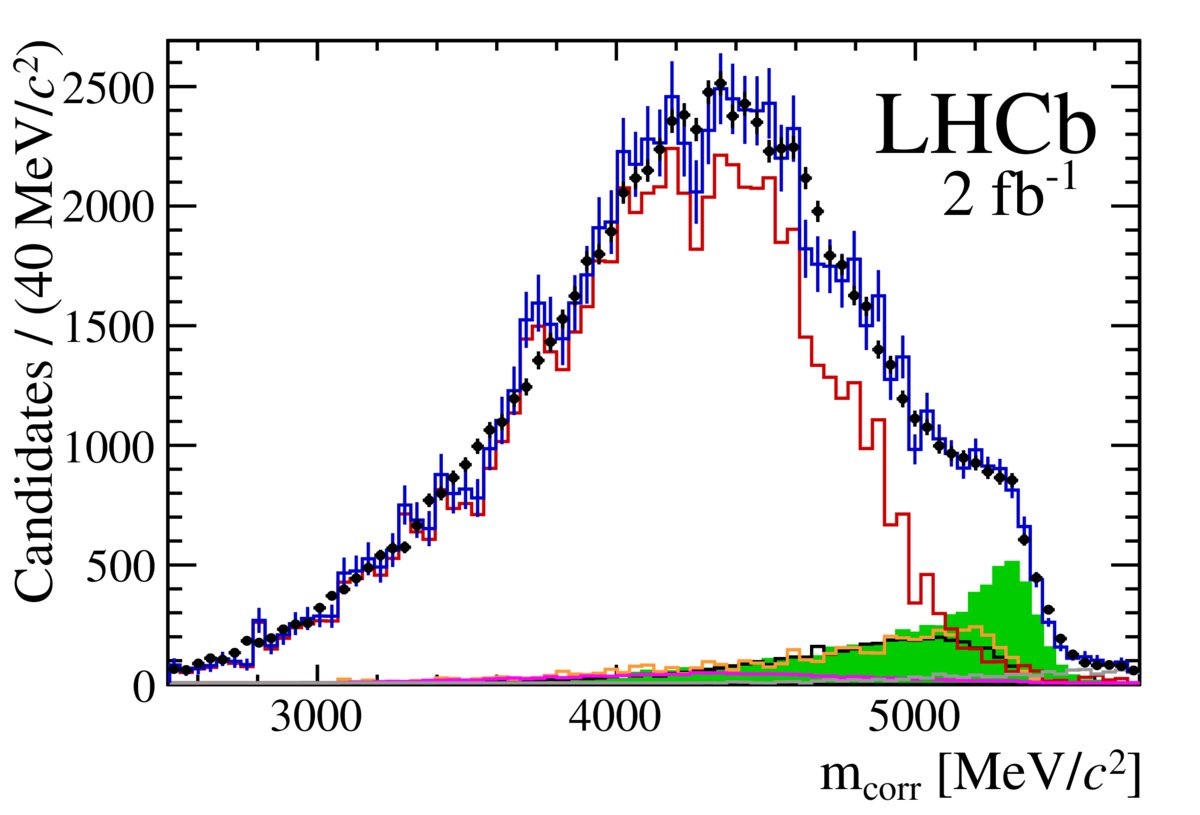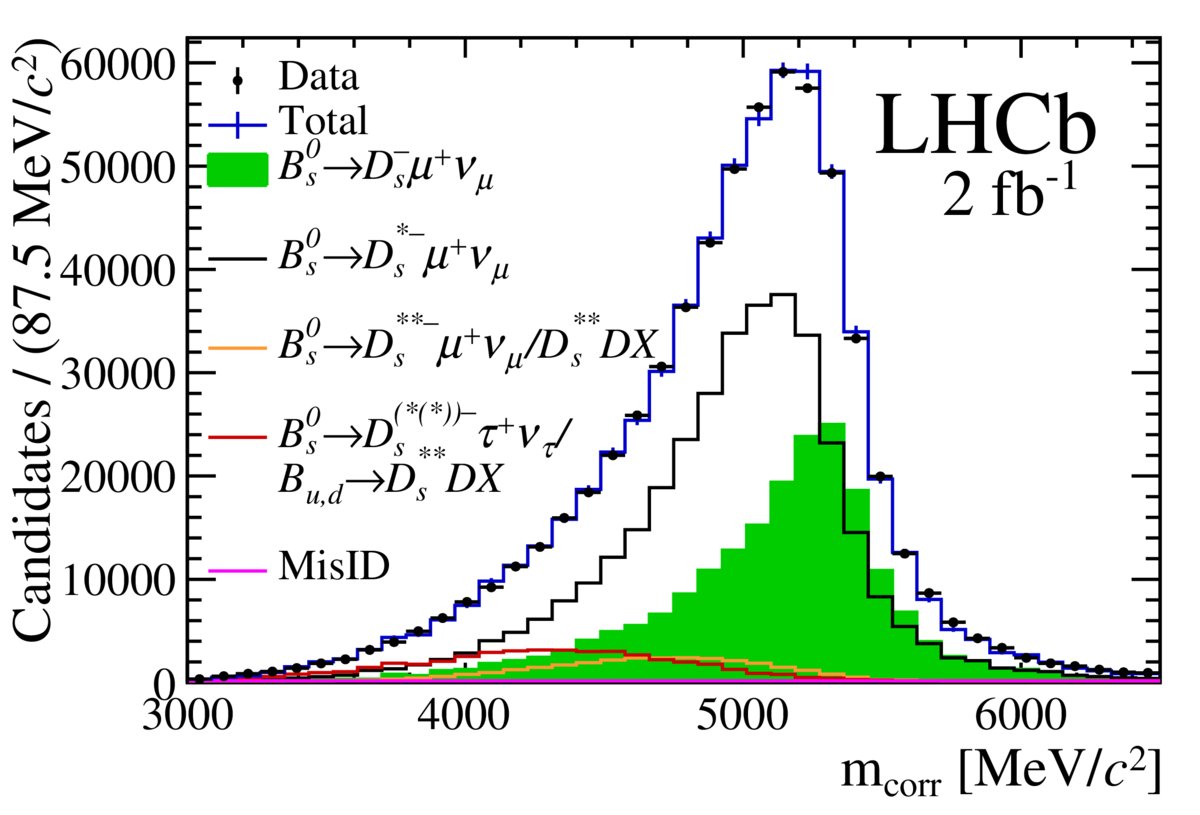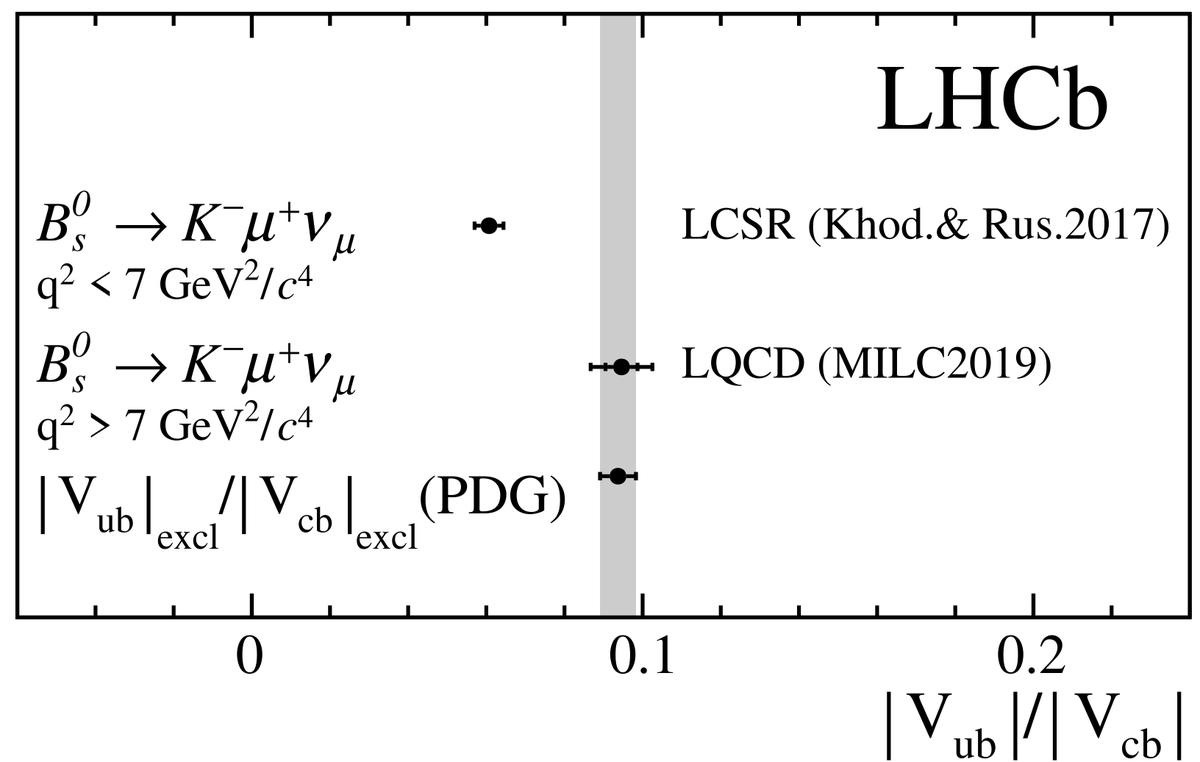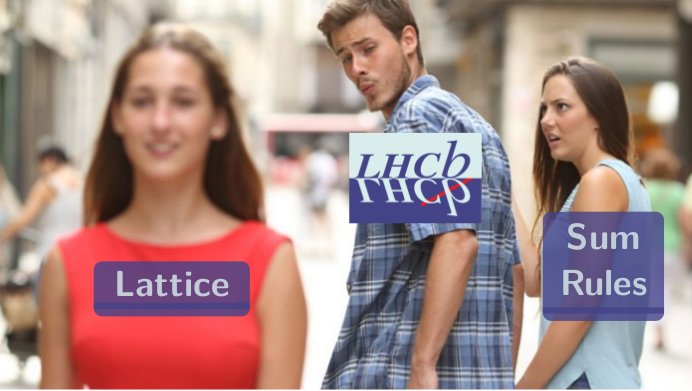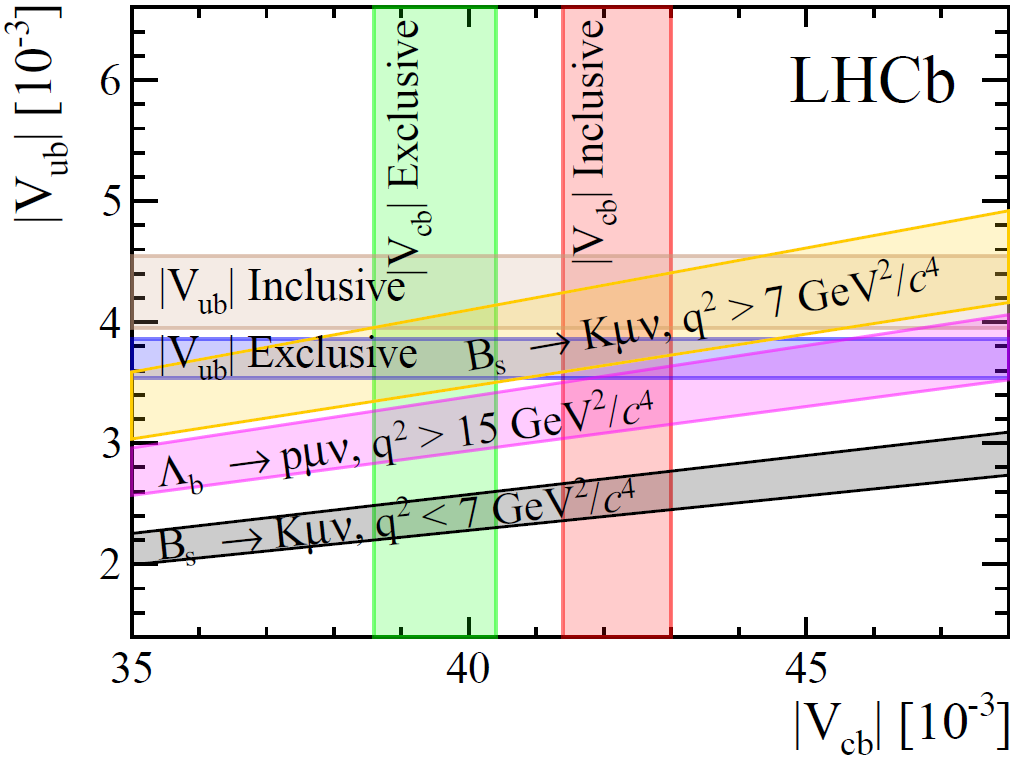Today @LHCbExperiment reports the first observation of the Bₛ⁰ → K⁻μ⁺ν process, in which a beauty-strange B meson decays to a muon and a strange kaon. It gives us access to Vub. A #thread. https://twitter.com/LHCbPhysics/status/1336934459166298112
Vub is the weak-interaction coupling of beauty (b) to up (u) quarks. It's one of the fundamental transitions of the weak interaction.
There are actually nine such parameters, one for each of three quark charged 2/3 going to one of the three quarks charged -1/3. They form a matrix called Cabibbo-Kobayashi-Maskawa. See https://nobelprize.org/prizes/physics/2008/summary/ at @NobelPrize
As it's quantum mechanics, they are complex numbers. The imaginary part is related to CP violation (i.e. it's different for quarks and anti-quarks). That's important because it explains why we live in a Universe of matter. https://www.forbes.com/sites/startswithabang/2020/10/20/the-standard-model-is-not-enough-new-lhc-study-shows/?sh=427b19f0170b
Also, as matter is conserved the sum of the elements in each row and column must be 1. That can be drawn as a set of triangles, as this one. Their area is proportional to the amount of CP violation. Cecilia Jarlskog demonstrated that while she was bored in a seminar.
Experimentally one can measure the angles, α β γ, or the length of the sides. Vub appears in one of the side on the left. But measuring stuff using quarks is hard. You never have a lonely quark. They always come in packets.
So to measure the CKM matrix elements you need to find a process that is reasonably well understood. And that can be quite complicated.
For Vub it's decays of the b quark to a u quark (hence Vub) and a virtual W boson that will further decay to a lepton (we like muons) and a neutrino. These are called semileptonic decays as they involve leptons, but not only leptons.
But what about the other quarks accompanying the b quark? One possibility is to use transitions of B mesons to pi mesons. That's reasonably easy to measure but requires theoretical input to describe how likely it is that the up quark forms a pi meson.
(Apologies: as the B meson contains an anti-quark b̅, I now have a b̅ in the diagram. Don't get worried by this.)
The other possibility is to look at all decays of all B mesons to any particles containing an up quark and no charm quark. That's the inclusive method. It's experimentally harder. LHCb can't do this, but Belle and BaBar could as they only have two B mesons in their detector.
The two methods are called exclusive (only one process) and inclusive (all processes). But they don't agree: 3.49 ± 0.13 permille versus 4.32 ± 0.18 permille, respectively. Here's the average of all inclusive measurements, from HFlAv https://arxiv.org/abs/1909.12524
So we need more exclusive measurements with other processes. That's why LHCb reports the first process using Bₛ⁰ mesons.
The decay is quite hard to see, as there are a lot of backgrounds. Here are the mass plots with the final fit.
For practical reasons, we actually measure the ratio of Vub and Vcb. So we also look at a decay that involves Vcb, Bₛ⁰→ Dₛ⁰μ⁺ν. That is somewhat easier.
We make two measurements depending on whether the invariant mass of the leptonic system, q², is small or large. That's needed because some theory predictions are more reliable at low or at high q². And the results are inconsistent  .
.
 .
.
What does this mean? That the theoretical predictions are inconsistent. One prediction is based on the "sum rules" technique, summing all possible contributions and the other on "Lattice" calculations where space-time is discretised. I made this meme long ago.
I don't know who is right. We will only know once both methods improve their computations and agree on what the decay rate of such exclusive decays should be.

 Read on Twitter
Read on Twitter

